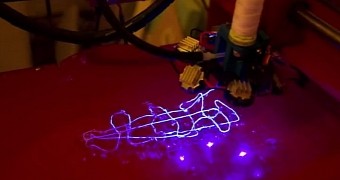Nature continues to be the major source of information and foundation for scientific advancement. Humans have reached the current technological heights by imitating or replicating what they observed in the environment. The Bug 3D printer is just the latest example of this.
The Bug is significantly different from all 3D printers in the market because it doesn't use any of the established additive manufacturing technologies (FDM, SLA and SLS).
Instead, it can create objects from fibers if you can believe it. One might even go so far as to say that it weaves them together, one string at a time.
Sebastian Morales, a student from the Illinois Institute of Technology (IIT), was inspired to create The Bug 3D printer by all the ways that animals and plants “fabricate” things. Specifically, he drew inspiration from how many insects and spiders create their webs and cocoons.
The Bug 3D printer
The machine, or robot, creates things from composite fibers by taking cotton thread, soaking it into a UV curable resin, and then extruding and putting it in place on the build platform, at which point LED lights instantly cure it (harden it).
Only some basic designs can be made at the moment, along a 3D grid that is printed first, as a rigid structure on top of which other fibers can be layered. Since fibers aren't as sturdy as plastic or resin, The Bug can't just extrude fibers on top of one another and hope for the best, like FDM printers do.
Morales intends to refine the printer, however, until the software is smart enough to generate more accurate and efficient print paths.
If the machine reaches the stage that Morales wants, it might become the launching ramp for a whole new type of 3D printing.
Just knowing we already have the means to print things from carbon fiber is almost a miracle at this point in time. Insulation “fabric” can also be made this way, as can engine parts, etc.
In fact, structurally sound buildings can be made from this as well, since the fibers don't necessarily have to be cotton. The sky's the limit basically.
ETA for the commercialization of The Bug 3D printer
There is no estimated time of arrival, sadly. Which is a shame, since a fiber 3D printer can create things by weaving instead of layering things, essentially solving the biggest problem of 3D printing tech as a whole: weakness due to the layers limiting the structural strength compared to injection molding, machining or casting.

 14 DAY TRIAL //
14 DAY TRIAL // 